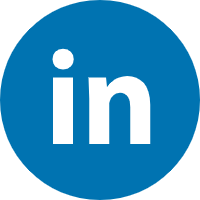What is an integrated circuit?
An integrated circuit (referred to as IC) is an electronic device that integrates a large number of electronic components
(such as capacitors, resistors, transistors, etc.) and their connecting lines on a single semiconductor chip. It is one of
the foundations of modern electronic technology.
Classification of integrated circuits
According to different classification standards, integrated circuits can be divided into various types:
Ⅰ.Classified by manufacturing process
According to the different manufacturing processes of integrated circuits, integrated circuits can be divided into:
1. Thick film circuit
Manufactured using a thick-film process by printing metal electrodes onto glass or ceramic substrates to create circuits. Thick-film integrated circuits have a simple manufacturing process and low cost, and are suitable for application scenarios that are sensitive to production costs, such as power circuits and analog circuits.
2. Thin film circuits
Manufactured by a thin film process, a metal thin film is deposited on the surface of the substrate to form a circuit. The manufacturing process of thin film integrated circuits is more precise, which is suitable for high-performance application scenarios such as high-speed digital circuits and microprocessors.
3. Transistor circuits
Transistor circuits refer to circuits manufactured using transistor devices as basic components. This manufacturing process is used to make some simple digital and analog circuits.
4. Large scale integration (LSI)
An integrated circuit that integrates thousands of transistors on the same chip. It is a major breakthrough in transistor circuit technology in the 1960s and one of the cornerstones of the rapid development of computer technology. The emergence of LSI technology not only greatly reduces the size of the computer, but also has a wide range of applications in the fields of electric power, communication, and medical treatment.
5. Very Large Scale Integration (VLSI)
An integrated circuit that integrates millions of transistors on the same chip. The development of VLSI technology has made a qualitative leap in the speed and storage capacity of computers, and it is also used in fields such as digital signal processing, image processing, and artificial intelligence.
6. Ultra Large Scale Integration (ULSI)
An integrated circuit that integrates billions of transistors on the same chip. ULSI technology is a further development of VLSI technology, which raises the level of circuit integration to a higher level and greatly improves computer performance.
7. Polarized metal-oxide-semiconductor field-effect transistor (PMOS) integrated circuits
Refers to an integrated circuit that uses PMOS transistors to implement logic circuits. It was one of the earliest integrated circuits. Due to the poor conductivity of PMOS transistors, the improvement of integration was limited, and it was later replaced by more advanced CMOS technology.
8. Complementary metal-oxide-semiconductor field-effect transistor (CMOS) integrated circuits
Refers to an integrated circuit that uses CMOS transistors to implement logic circuits. It is currently the most mainstream integrated circuit technology. CMOS transistors have the advantages of low power consumption, strong anti-interference ability, and fast speed, and are widely used in various fields.
9. Bipolar Junction Transistor (BJT) integrated circuits
Refers to an integrated circuit that uses BJT transistors to implement logic circuits. It is similar to PMOS integrated circuits, which limits the improvement of integration and is replaced by CMOS technology. However, in some high-speed circuit fields, BJT integrated circuits still have a wide range of applications.
Ⅱ. Classified by function
According to the different functions of integrated circuits, integrated circuits can be divided into:
Digital Integrated Circuit (DIC): Mainly used for digital signal processing, including logic gate circuits, memories, microprocessors, etc.
Analog Integrated Circuit (AIC): mainly used for analog signal processing, including amplifiers, filters, power amplifiers, etc.
Hybrid Integrated Circuit (HIC): combines the advantages of digital and analog integrated circuits while taking into account both digital and analog signal processing capabilities.
Optoelectronic Integrated Circuit (OEIC): Mainly used for optical signal processing, including laser drivers, photoelectric converters, photoelectric amplifiers, etc.
Sensor Integrated Circuit (SIC): mainly used for measurement and detection, including temperature sensors, pressure sensors, photoelectric sensors, etc.
Biosensor Integrated Circuit (BIC): mainly used for detection and analysis in the biomedical field, including blood glucose monitors, blood pressure monitors, DNA sequencers, etc.
Ⅲ. Classified by package
According to the different packaging forms of integrated circuits, integrated circuits can be divided into:
1. Single Inline Package (SIP)
This package style is suitable for smaller and simpler chips with only one pin column. Due to its simple structure and low manufacturing cost, it is still widely used in some low-end applications.
2. Dual Inline Package (DIP)
This package is more common than SIP and is mainly suitable for medium-sized integrated circuits. It has two pin columns with a typical pin pitch of 2.54mm. Since its pin structure is similar to that of a socket, the circuit board can be assembled and maintained by plugging and unplugging.
.png)
Dual Inline Package Integrated Circuit(IC)
3. Thin Small Outline Package (TSOP)
This type of packaging is suitable for larger integrated circuits such as memories and microcontrollers. Its thickness is very small, generally 1.0~1.2mm, and the number of pins is large, up to hundreds. The advantages of TSOP packaging are high reliability and small footprint, so it is widely used in high-end electronic equipment.
4. Plastic Quad Flat Pack (QFP) and Plastic Flat Pack (PFP)
This packaging form is one of the most widely used integrated circuit packaging forms at present. It has a compact structure and good heat dissipation performance, and is widely used in computer, communication, control and other fields. The pin arrangement is generally square or rectangular, and the number of pins is large, up to several hundred.
5. Pin Grid Array (PGA)
This package form is a high-density, high-performance integrated circuit package with a large number of pins, which can reach several thousand. The main advantage of PGA packaging is stable electrical performance and high reliability, so it is widely used in high-speed computers, industrial automation and other fields.
.jpg)
Pin Grid Array Integrated Circuit(IC)
6. Zigzag In-Line Package (ZIP)
This packaging form is suitable for large-scale integrated circuits such as high-performance microprocessors and memories. The main features of the ZIP package are large number of pins, high density, and small package size. Due to its excellent electrical properties, it is widely used in high-end electronic products.
7. Ball grid array package (BGA)
Ball Grid Array (BGA) is a surface mount package that connects to the copper pads on the PCB by changing the pads of the chip into tiny spherical electrodes. Compared with other surface mount packaging forms, BGA can achieve higher pin density and better heat dissipation performance, and it is easier to use machines for rapid production, so it is widely used in large and complex digital circuits and high-end microprocessors. Electronic equipment.
.jpg)
Ball grid array package Integrated Circuit(IC)
8. Land Grid Array Package (LGA)
Land grid array package (LGA) is also a form of surface mount package, which uses a land grid array and a corresponding interface on a chip for connection. The number of pins and spacing of LGA can be flexibly designed according to the needs of the chip, and it is usually used in high-end electronic devices such as microprocessors, image sensors and communication chips.
.jpg)
Land Grid Array Package Integrated Circuit(IC)
9. Plastic electrode chip carrier (PLCC)
Plastic electrode chip carrier (PLCC) is an old-fashioned second-wire package that has been replaced by more modern package formats such as DIP and SMD. PLCC is characterized by good moisture-proof performance, high reliability and good self-coupling effect, but due to its large size, it is not suitable for the packaging of small circuits.
.jpg)
Plastic electrode chip carrier Integrated Circuit(IC)
10. Surface Mount Components (SMD)
Surface Mount Components (SMD) is the most widely used form of packaging in modern electronic equipment. SMD is connected to the circuit board by surface mount welding, which is characterized by small size, light weight, high reliability, good vibration resistance and impact resistance. SMD packaging can be divided into SMD SMD and modular packaging of electronic devices. Among them, SMD SMD packaging mainly includes several packaging specifications such as 0402, 0603, and 0805.
11. Leadless Chip Carrier (LCC)
Leadless Chip Carrier (LCC) is a form of leadless packaging that enables connection to a PCB by mounting the chip on a leadless carrier. LCC has the characteristics of high density, small size, high reliability, and stable reliability. It is mainly used in high-end computers, communications, aerospace and other fields.
12. Multi-chip module (MCM)
Multi-chip module (MCM, Multi-Chip Module) refers to a modular package composed of multiple chips and some circuit components. In MCM, different chips can use different manufacturing processes and process parameters, and then combined through packaging, printed circuit boards, etc. to form an overall circuit module. The manufacturing and design technology of MCM is relatively mature, and it is widely used in high-end communication, computer, military and other fields.
.jpg)
Multi-chip module Integrated Circuit(IC)
MCM can be divided into two types, one is single-layer MCM, that is, all chips and components are located at the same level, and the other is multi-layer MCM, that is, different chips and components are arranged on multiple levels. The advantages of single-layer MCM are simple packaging and reliable performance, but the number of chips that can be integrated is limited; the advantages of multi-layer MCM are high integration, high-speed communication and high-power output, but manufacturing is difficult and costly.
There are various packaging forms of MCM, among which the more common ones include Ball Grid Array Package (BGA), Plastic Quad Flat Package (QFP), Thin Profile Package (TSOP) and so on. In addition, with the continuous development of new packaging technologies such as SMD and LGA, the packaging form of MCM is also constantly updated to adapt to different applications and requirements.
Ⅳ. Classified by application field
According to different fields of application of integrated circuits, integrated circuits can be divided into:
General Purpose Integrated Circuits: General Purpose Integrated Circuits can be used in various application fields, including computers, communications, control systems, etc. Universal integrated circuits are characterized by simple design, relatively single function, and low cost.
Digital Integrated Circuits (Digital Integrated Circuits): Digital integrated circuits are mainly used in digital electronic systems, including computers, communications, and control systems. Digital integrated circuits are characterized by the ability to realize complex digital logic functions, low power consumption, and high integration.
Analog Integrated Circuits (Analog Integrated Circuits): Analog integrated circuits are mainly used in analog electronic systems, including audio amplifiers, televisions, radio frequency transceivers, etc. Analog integrated circuits are characterized by the ability to process continuous signals with high precision and stability.
Mixed-Signal Integrated Circuits (Mixed-Signal Integrated Circuits): Mixed-Signal Integrated Circuits are a combination of digital circuits and analog circuits, which can process digital and analog signals at the same time, and have a wide range of applications.
Radio Frequency Integrated Circuits (Radio Frequency Integrated Circuits): Radio Frequency Integrated Circuits are mainly used in wireless communication and radar systems, and have the characteristics of high speed and high frequency.
Sensor Integrated Circuits (Sensor Integrated Circuits): Sensor integrated circuits are mainly used in various sensor systems, such as temperature sensors, humidity sensors, pressure sensors, etc. Sensor ICs are characterized by high sensitivity and high precision.
Biomedical Integrated Circuits (Biomedical Integrated Circuits): Biomedical integrated circuits are mainly used in the biomedical field, such as medical diagnosis, health monitoring, etc. Biomedical integrated circuits are characterized by high precision, low power consumption, and small size.
History and Evolution of Integrated Circuits
The history of integrated circuits dates back to the 1950s, when electronics engineers began to figure out how to integrate multiple transistors and other components on the same silicon chip. In 1958, Jack Kilby of Texas Instruments invented the world's first integrated circuit, which consisted of a transistor, a capacitor and several resistors, and was packaged in on a tiny silicon chip. In the same year, Robert Noyce, a British physicist who independently researched integrated circuits, also invented a similar integrated circuit. His integrated circuit was composed of several transistors and used a new packaging technology . The inventions of the two scientists laid the foundation for integrated circuit technology, enabling integrated circuits to be widely used in various electronic devices.
In the decades since its birth, the integrated circuit has undergone many evolutions. In the 1960s, the size of integrated circuits began to shrink and their performance continued to increase. In the 1970s, large-scale integration (LSI) emerged, which contained hundreds or thousands of transistors and other components, and completed complex circuit designs on a single chip. In the 1980s, very large-scale integration (VLSI) was widely used, which can pack thousands of transistors and other components, and has higher speed and lower power consumption. After the 1990s, the manufacturing process of integrated circuits continued to improve, the size continued to shrink, and the performance continued to improve. At the same time, various new integrated circuits such as system-on-chip (SoC) and digital signal processor (DSP) are emerging.
FAQs
1) What does integrated circuit mean?
Integrated circuit (IC) refers to a miniaturized electronic circuit that is made up of multiple electronic components, such as transistors, resistors, and capacitors, all fabricated on a small piece of semiconductor material, typically silicon. The components are interconnected by means of thin wires or metal layers on the surface of the semiconductor material, which provides the necessary electrical connections between the various components.
ICs are designed to perform specific electronic functions, such as amplification, oscillation, digital logic, and memory storage, among others. They have revolutionized the field of electronics by enabling the creation of complex and sophisticated electronic devices that are smaller, faster, and more reliable than their earlier counterparts made from discrete components. Today, ICs are used in a wide range of electronic devices, including smartphones, computers, televisions, and medical equipment, among others.
2) Who invented integrated circuit?
The integrated circuit was invented independently by two individuals, Jack Kilby and Robert Noyce, in 1958. Jack Kilby was working at Texas Instruments at the time and developed the first integrated circuit using germanium. Robert Noyce, who was working at Fairchild Semiconductor, also developed a similar integrated circuit using silicon. Both of their designs involved multiple components on a single chip, which revolutionized the electronics industry and paved the way for the development of modern computer technology.
3) How is a microprocessor different from an integrated circuit?
A microprocessor is a type of integrated circuit that contains the processing unit of a computer or other electronic system. So, while all microprocessors are integrated circuits, not all integrated circuits are microprocessors.
Integrated circuits refer to a broad category of electronic circuits that are manufactured using the same process of integrating multiple electronic components onto a single chip. These components may include resistors, capacitors, diodes, transistors, and other electronic devices.
On the other hand, a microprocessor is a specific type of integrated circuit that contains the central processing unit (CPU) of a computer or other electronic system. In addition to the CPU, a microprocessor may also include other components, such as memory, input/output interfaces, and various types of controllers.
Therefore, the key difference between a microprocessor and an integrated circuit is that a microprocessor is a specialized type of integrated circuit designed to perform specific computing functions, while integrated circuits encompass a wider range of electronic circuits that can perform a variety of functions beyond computing.
4) When was the integrated circuit invented?
The integrated circuit was invented independently by two individuals, Jack Kilby and Robert Noyce, in 1958.
5) How integrated circuits are made?
Integrated circuits (ICs) are typically made using a process called semiconductor fabrication, or simply "semiconductor manufacturing." The process involves several steps, including:
Wafer preparation: A silicon wafer is cleaned and polished to a mirror-like finish. The wafer is then coated with a thin layer of silicon dioxide.
Photolithography: A photoresist is applied to the silicon dioxide layer, and a mask is used to selectively expose the photoresist to UV light. This creates a pattern on the photoresist, which is then etched away to expose the silicon dioxide layer in the desired pattern.
Etching: The exposed silicon dioxide layer is etched away using chemicals, leaving a pattern of exposed silicon.
Doping: Different regions of the silicon are doped with impurities to create p-type and n-type regions, which form the basis of transistors and other electronic components.
Oxidation: A thin layer of silicon dioxide is grown on the exposed silicon to act as an insulator.
Deposition: A thin layer of metal (usually aluminum) is deposited on the silicon dioxide layer, which is then patterned and etched to create the interconnects that link the components together.
Packaging: The completed ICs are packaged in a protective enclosure and tested to ensure they meet the required specifications.
This is just a basic overview of the process, and there are many variations depending on the specific type of IC being manufactured. The process has become increasingly complex and sophisticated over theyears, with advances in materials science and nanotechnology enabling the creation of
ever-smaller and more powerful ICs.

We are a professional distributor of electronic components, providing a wide range of electronic products, saving you a lot of time, effort and cost through our meticulous order preparation and fast delivery service.
Share this post


